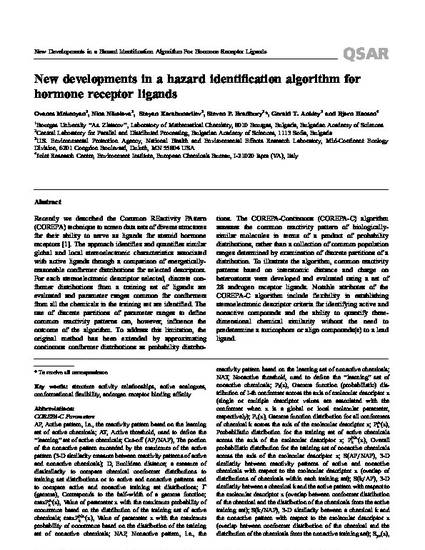
Recently we described the Common REactivity PAttern (COREPA) technique to screen data sets of diverse structures for their ability to serve as ligands for steroid hormone receptors [1]. The approach identi®es and quanti®es similar global and local stereoelectronic characteristics associated with active ligands through a comparison of energeticallyreasonable conformer distributions for selected descriptors. For each stereoelectronic descriptor selected, discrete conformer distributions from a training set of ligands are evaluated and parameter ranges common for conformers from all the chemicals in the training set are identi®ed. The use of discrete partitions of parameter ranges to de®ne common reactivity patterns can, however, in¯uence the outcome of the algorithm. To address this limitation, the original method has been extended by approximating continuous conformer distributions as probability distributions. The COREPA-Continuous (COREPA-C) algorithm assesses the common reactivity pattern of biologicallysimilar molecules in terms of a product of probability distributions, rather than a collection of common population ranges determined by examination of discrete partitions of a distribution. To illustrate the algorithm, common reactivity patterns based on interatomic distance and charge on heteroatoms were developed and evaluated using a set of 28 androgen receptor ligands. Notable attributes of the COREPA-C algorithm include ¯exibility in establishing stereoelectronic descriptor criteria for identifying active and nonactive compounds and the ability to quantify threedimensional chemical similarity without the need to predetermine a toxicophore or align compounds(s) to a lead ligand.
- structure activity relationships,
- active analogues,
- conformational flexibility,
- androgen receptor binding affinity
Available at: http://works.bepress.com/steven_bradbury/18/
